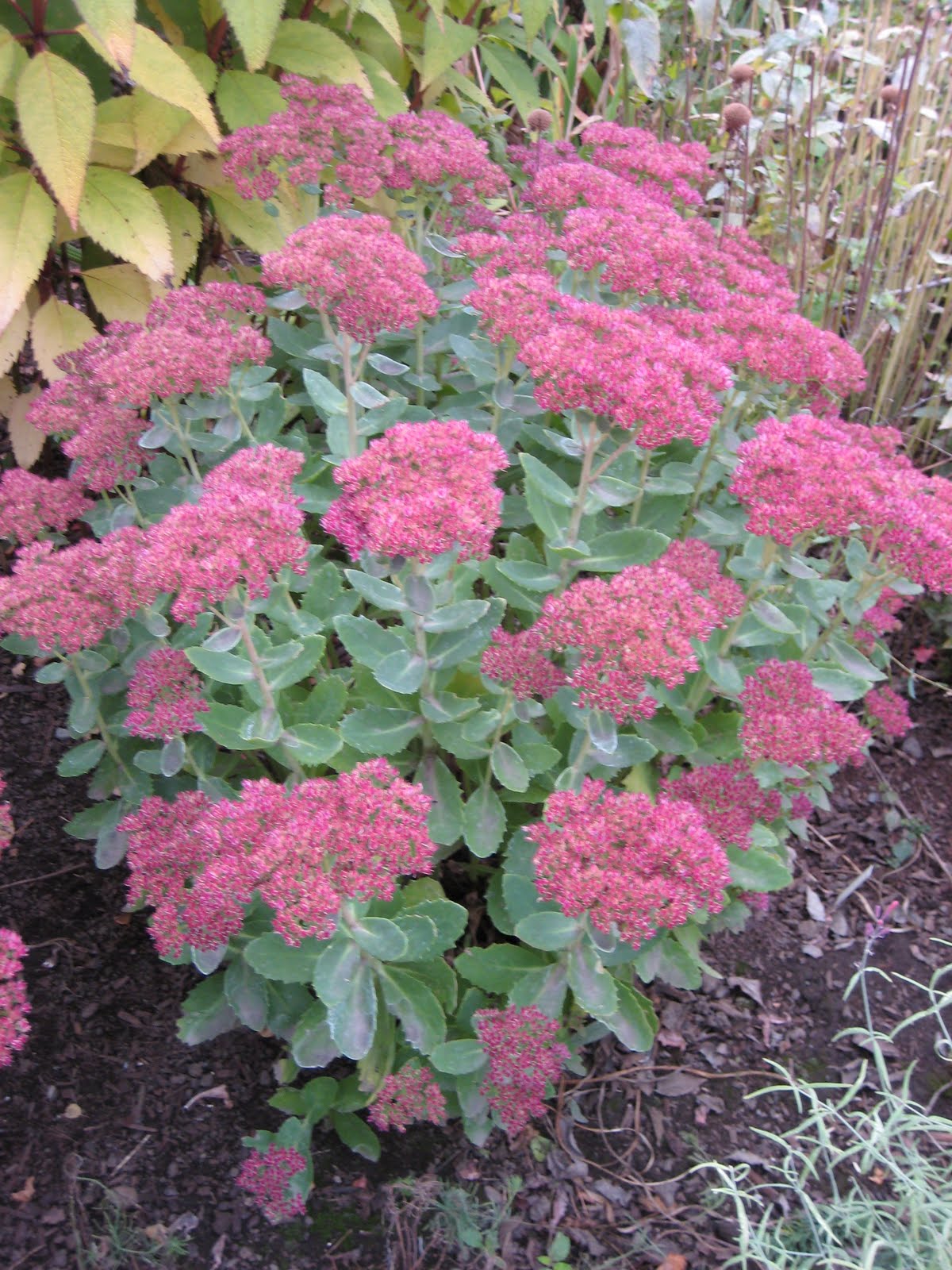
Although not specifically grown for flowers, creeping sedums do produce attractive but short sprays of flowers. Traditionally, creeping sedums are grown for their colorful foliage (blue, yellow, copper, marron and more!) or for their draping form which softens the edge of containers and the rock walls that they have been tucked into. The creeping sedums (like Sedum ternatum, Sedum tetractinum and many others) are a wildly variable group with long narrow stems that grow along the ground and form mats of colorful fleshy foliage. Sedum telephium 'Sunset Cloud' Creeping Sedum Tall sedums have been traditionally grown for their symmetrical form and colorful flowers, but newer varieties of tall sedum also feature colorful leaves in shades of copper, dusky mauve and dark purple. The stems of tall sedum are clothed in fleshy succulent leaves along their length and are topped in summer or autumn with colorful flower clusters. New cultivars of tall sedums have been bred to be shorter which means they are less floppy and in better proportion to today's smaller gardens. The tall sedums (mainly Sedum spectabile, Sedum telephium) have upright stems that grow from 1 to 3 feet tall depending on variety and conditions. A Sedum Primer - Tall versus Creeping Tall Sedumįor the garden, there are two main groups of sedums, tall sedums and creeping sedums. Some taxonomists have moved the tall sedums into the genus Hylotelephium, but tall or short, we still call 'em sedum. So it is important to know your sedum before you plant. The genus Sedum is a diverse group that includes upright tall sedums, mat-forming carpet sedums, insanely drought tolerant sedums and sedums that need to drink regularly, sun loving sedums and woodland garden sedums. Here at Plant Delights Nursery, we have been growing sedum plants for over 25 years in our hot, humid, rainy Raleigh garden and so we thought we'd pass on our expert tips for growing sedum plants as well as the names of our favorite varieties of these popular succulent plants. We may receive a commission for purchases made through these links.Sedum (Stonecrop) is an easy to grow group of succulents that look great in the summer and autumn garden. This page contains affiliate links to products on Amazon. Prune in the spring to encourage new growth.Potted sedums will survive indoors or outdoors.Potted sedums need a bit more watering.Rather than over care for them and cause damage, it is oftentimes, better to forget about them during the winter. Sedums are very hardy succulent plants that can tolerate the cold winters. Sedum will still need 3-4 hours of sun each day and an occasional watering. It is possible for you to bring your container sedum indoors for the winter, but don’t expect blooming, as it is a dormant time. Sedums go dormant for the winter, and will survive outdoors in the brutal cold. Potted sedum will need more water than the in ground plants. If it is an unusually dry winter, you should water just enough so the soil is not completely dried out.

A covering of snow will help to protect the sedum, but continuous precipitation and standing water is not good for the plant. Once the growing season is complete, watering of the sedum should stop. You can add protection to the roots of the sedum by wrapping the pot in burlap, burying the pot in the ground, or allowing snow to cover the container. This can cause a thaw/freeze cycle which is not healthy for the roots. Do not store the container in a sunny area. It is best for the plant to stay frozen and dormant during the cold and rebloom in the spring. Place the pot in a sheltered area near a building for the winter.

:max_bytes(150000):strip_icc()/autumn-joy-sedum-2132607-10-88d77cd41b6b4bd297b9d9ee12d3578c.jpg)
#Autumn joy sedum in pots crack
Ceramic or terracotta pots will crack under colder conditions, so we recommend using our resin containers. Depending on the material of the container, potted sedums can remain outdoors all winter.

Most sedum varieties are very hardy and can withstand the harsh winters. Snip the dead stems and flowers down to the ground. If the plant looks overgrown and loses its shape, you can prune it to promote next year’s growth. In the spring, cut the stalks to the ground to encourage new growth.Ĭreeping sedum grows lower to the ground. If you want to enjoy the colors of the flowers over the winter, then leave them be. It will grow back in the spring.Ĭlumping sedums grow taller and have clusters of flowers that change color in the fall. If the sedum is diseased, you will want to cut it to the ground and discard any of the clippings. Pinching back the plant can be done to control the spread or size of the plant. Some find the plant attractive during the winter months.


 0 kommentar(er)
0 kommentar(er)
